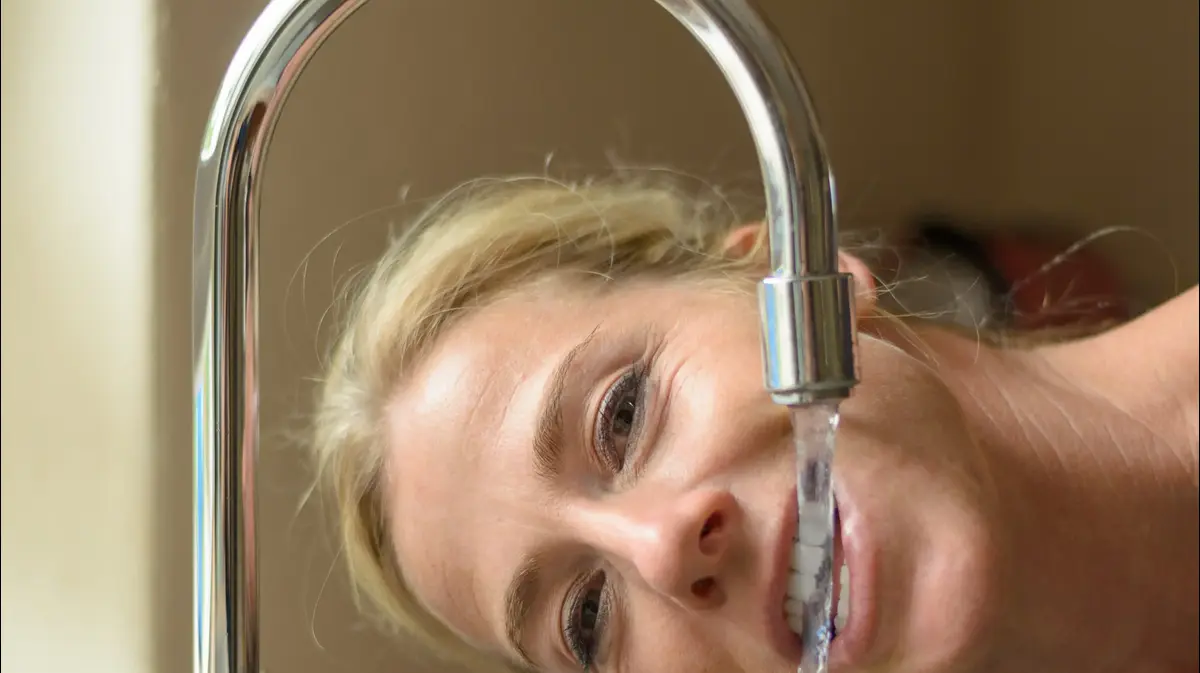By Aria Bendix -
NBC News
About 650 Hawaiian residents have relied on bottled water since March, after the state health department detected synthetic chemicals, known as PFASs, in the local water system.
The contamination dates back to at least October, when the Hawaii Department of Health detected the chemicals in one of two wells that supply Kunia Village, an affordable housing development on O'ahu.
The department announced in January that the detected levels exceeded the Environmental Protection Agency's proposed limit for two types of PFAS - called PFOA and PFOS - in drinking water, as well as Hawaii's state limit, above which it is expected that communities treat their water systems or provide an alternative source.
However, the concentration is below the current EPA limit.
[After winning the prestigious Goldman prize for protecting the Amazon, Alessandra Korap warns: "We do not negotiate the lives of our children"]
Kunia Village stopped using the contaminated well after that.
In early March, the operator of the water supply system began supplying bottled water to residents out of fear that the second well was also contaminated, which was confirmed by tests by the sanitation department last week.
Planet Earth: Buildings built in New York after 2026 will not have natural gas
May 7, 202301:12
Residents were told to use bottled water for drinking or brushing teeth and tap water for washing hands, laundry or bathing.
“We think it's important to act quickly and wisely,” said Stephanie Whalen, president of the Kunia Water Association.
PFAS stands for Perfluoroalkyl and Polyfluoroalkyl Substances, but they are more often referred to as “permanent chemicals” because they are nearly impossible to destroy and can remain forever in the air, water, and soil.
[Cristina Mittermeier, the Mexican biologist who carries out a battle for the sea with images that take your breath away]
This class of chemicals is associated with health consequences such as low birth weight, high cholesterol, and thyroid disease.
PFOA, in particular, has been linked to an increased risk of kidney cancer.
A study published last year found that exposure to high levels of PFOS was associated with an increased risk of liver cancer.
PFAS are used in the manufacture of consumer products such as food packaging, cosmetics, and textiles for their ability to resist stains, grease, and water.
They are also found at some military sites due to the use of a PFAS-based fire-fighting foam that dates back to the 1970s. The military continues to use the foam for emergency response, but has stopped using it for testing and training.
PFAS contamination is common
PFAS contamination in water is widespread in the US The Environmental Working Group, a research and advocacy organization focused on toxic chemicals, told Noticias Telemundo's sister network NBC News that at least 1,500 places they would violate EPA's proposed PFAS limits for drinking water — 4 parts per billion — which the agency hopes to finalize by the end of this year.
The EPA, for its part, declared in March that up to 6,300 water supply systems - serving 94 million people - contain PFAS levels above proposed limits.
“There are very few places that we've looked for PFAS and haven't found them,” said Jamie DeWitt, an East Carolina University professor of toxicology who reviewed the Kunia Village water sample results.
"That shows how ubiquitous they are in the environment."
[More than 330 species of wildlife around the world are contaminated with “permanent” chemicals]
But Kunia levels are higher than the average background concentrations found across the country, according to Anna Reade, a scientist with the Natural Resources Defense Council, an environmental advocacy group.
“This is a pretty alarming level,” Reade said.
In a Kunia Village well, PFOA levels were up to double the EPA's proposed limit, and PFOS levels up to 3.5 times higher.
In the other, PFOA levels were between five and seven times the proposed threshold, and PFOS levels at least 11 times higher.
Astronomers record for the first time a star swallowing an entire planet
May 4, 202300:23
“It ticks all the boxes of being too contaminated for people to drink safely,” Reade said.
More water supply systems begin testing for PFAS
The Hawaii Department of Sanitation said it has been testing small water supplies located near likely PFAS hotspots, such as industrial or military areas, with the help of an EPA grant.
Kunia Village is one such location, the department said, but added that it did not know how long PFAS had been present in the area's water before testing in October.
Kunia village in 2017. Kristen Wong / US Army
"The biggest concern is that people may have been consuming this for many, many years, maybe even decades," DeWitt said.
However, PFAS detection tests are becoming more frequent: The Safe Drinking Water Act obliges large public water supply systems -and some medium and small ones- to detect these chemical substances until 2025 and report the results the next year.
The type of monitoring Hawaii is doing is voluntary, Reade said, but in the next few years "we're going to get a lot more information about what we're dealing with in our drinking water."
[Planet Earth: They create a prototype of an underwater robot to clean Lake Titicaca of plastics]
Different water supply systems respond to high levels of PFAS in different ways.
Some supply bottled water temporarily, but Reade says many also employ long-term solutions, such as connecting to a new water source or installing a specialized treatment system.
However, it may take time for communities to decide or apply these solutions.
The city of Emmaus, Pennsylvania, for example, is still weighing its options more than a year after elevated levels of PFAS were detected in its water.
PFAS problem in Hawaii may be rooted in military activity
The source of the contamination in Kunia Village has not been identified, but the health department said the PFAS compounds detected appear to match those in other places with known contamination by fire-fighting foam.
DeWitt also said that in the case of Kunia Village, "it looks as if the sources are military, as opposed to an industrial source or a landfill."
The health department said it is waiting for more information from the Army, which owns one of the wells.
The US Army Hawaii Garrison said it does not know the source of the contamination, but is investigating whether PFAS-containing materials may have been stored, used or released at nearby military sites.
[Planet Earth: In 2016 they went around the world in a solar plane. Now they will attempt another feat]
In April, according to Whalen, the town of Kunia began running water from another source through the pipe to remove contamination.
It is awaiting the most recent test results.
“If the results are positive, great.
We will stop bottling water.
If not, we will continue to bottle water,” Whalen said.
Low levels of PFAS have also been detected this year in several Honolulu water systems.
Reade said that's not surprising given the state's history of military activity.
“I think unfortunately it will be a problem that Hawaii will have to deal with beyond a few wells,” he said.





/cloudfront-eu-central-1.images.arcpublishing.com/prisa/2S37M3K3RRCEBPSIBWEYNJ2BHE.jpg)

